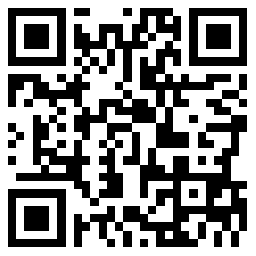中英
1
當(dāng)前位置: 在線(xiàn)翻譯 > 英語(yǔ)翻譯 > pulse-code modulation
劃詞翻譯
pulse-code modulation中文是什么意思
- 中文翻譯
- 造句
- 脈沖編號(hào)調(diào)變
- 脈沖編碼調(diào)制
- 脈沖電碼調(diào)變
- 脈沖碼調(diào)制
- 脈碼調(diào)制
- pulse n. 〔sing., pl. 〕 豆類(lèi);豆。
- code n. 1.法典;法規(guī)。 2.規(guī)則,準(zhǔn)則;(社會(huì)、階級(jí)等的 ...
- modulation n. 調(diào)整,調(diào)節(jié);(聲調(diào)的)抑揚(yáng),變化;【音樂(lè)】轉(zhuǎn)調(diào),變 ...
- binary pulse code modulation 二進(jìn)制脈碼調(diào)制
- binary pulse-code modulation 二進(jìn)脈沖電碼調(diào)整; 二元脈沖編碼調(diào)制; 雙脈碼調(diào)制
- delat pulse code modulation 三角脈沖電碼調(diào)變
- delta pulse code modulation 增量脈碼調(diào)變; 增量脈碼調(diào)制
- differential pulse code modulation 差分脈沖調(diào)制; 差分脈碼調(diào)制; 差值脈沖編碼燈; 微分脈沖碼燈; 微分脈碼調(diào)制
- hybrid pulse code modulation 混合脈沖編碼調(diào)制; 混合脈碼調(diào)制
- linear pulse code modulation 線(xiàn)性脈沖碼調(diào)制
- optical pulse code modulation 光脈沖編碼調(diào)制
- pcm ( pulse code modulation ) 脈沖編碼調(diào)制
- pcm pulse code modulation 脈沖編碼調(diào)制; 脈碼調(diào)制技術(shù)
- pcm(pulse code modulation) 脈沖代碼調(diào)制
- pdh pulse code modulation 脈碼調(diào)制
- pulse amplitude code modulation 脈沖幅度編碼調(diào)制; 脈幅編碼調(diào)制
- pulse code modulation 脈沖編碼燈; 脈沖編碼調(diào)制; 脈沖代碼調(diào)制; 脈沖碼調(diào)制; 脈碼燈; 脈碼調(diào)變; 脈碼調(diào)制; 偏碼調(diào)制
- pulse code modulation cable 脈碼調(diào)制電纜
- pulse code modulation communication 脈碼調(diào)制通信
- pulse code modulation decoding 脈沖調(diào)制解碼; 脈沖調(diào)制時(shí)的解碼
- pulse code modulation digital 脈沖碼調(diào)制數(shù)字; 脈碼調(diào)制數(shù)字
- pulse code modulation exchange 脈碼調(diào)制交換機(jī)
- pulse code modulation multiplex 脈碼調(diào)制復(fù)用
- pulse code modulation pcm 博碼調(diào)變; 脈沖編碼調(diào)制; 脈碼調(diào)制
- pulse code modulation recorder 脈沖編碼調(diào)制錄音機(jī); 脈碼調(diào)制記錄器; 脈碼調(diào)制錄音機(jī)
- Pulse - code modulation , pcm
脈沖碼調(diào)變 - Pulse - code modulation
脈沖碼調(diào)變 - Professional digital audio applications employing pulse - code modulation - preferred sampling frequencies
采取脈沖代碼調(diào)制的專(zhuān)業(yè)數(shù)字聲頻的應(yīng)用.優(yōu)選取樣頻率 - Telecommunications - network performance - tandem encoding limits for 32 - kbit s adaptive differential pulse - code modulation
電信.網(wǎng)絡(luò)性能.標(biāo)準(zhǔn)- 32k位秒自適應(yīng)差動(dòng)脈沖代碼調(diào)制的串聯(lián)編碼限制 - Telecommunications - digital processing of voice - band signals - line format for 32 - kbit s adaptive differential pulse - code modulation channel - control templates and robbed - bit signaling alarm transmission
電信.音頻信號(hào)的數(shù)字處理. 32 - kbit s自適應(yīng)差動(dòng)脈沖代碼調(diào)制adpcm用線(xiàn)路格式 - ; ansi t1 . 302a - 92 telecommunications - digital processing of voice - band signals - line format for 32 - kbit s adaptive differential pulse - code modulation channel - control templates and robbed - bit signaling alarm transmission ; supplement t . 302a - 1992
電信.音頻信號(hào)的數(shù)字處理. 32k位秒自適應(yīng)差動(dòng)脈沖代碼調(diào)制的行格式
Pulse-code modulation (PCM) is a method used to digitally represent sampled analog signals. It is the standard form of digital audio in computers and various Blu-ray, DVD and Compact Disc formats, as well digital telephone systems.
詳細(xì)百科解釋
- pulse-code modulationとは意味:pulse-code modulation パルス?コード変調(diào)
- 推薦英語(yǔ)閱讀
pulse-code modulation的中文翻譯,pulse-code modulation是什么意思,怎么用漢語(yǔ)翻譯pulse-code modulation,pulse-code modulation的中文意思,pulse-code modulation的中文,pulse-code modulation in Chinese,pulse-code modulation的中文,pulse-code modulation怎么讀,發(fā)音,例句,用法和解釋由查查在線(xiàn)詞典提供,版權(quán)所有違者必究。


